
Queen Elizabeth I Was Probably Killed By The Makeup Required For Her Signature Look
Genevieve Carlton
Pale white skin was the signature look for the upper class in the Elizabethan era. Queen Elizabeth I’s makeup represented the 16th-century ideal for women, with her porcelain skin representing nobility and earthly perfection. But to achieve that perfection, Elizabeth coated her face in lead, which slowly poisoned her body. That wasn’t the only dangerous cosmetic Elizabeth used – she also rubbed mercury on her lips and likely used a mercury-based makeup remover that ate away her skin.
As a female ruler, Queen Elizabeth I was held to even higher standards than her male contemporaries. While battling threats to her throne from Mary, Queen of Scots, Elizabeth lamented that royalty couldn’t let a single spot or blemish show. So the queen used more and more lead cosmetics as she aged, reportedly wearing makeup and lipstick an inch thick in her final days. And that’s just the beginning when it comes to facts about Queen Elizabeth I’s makeup.
________________________________________
• Photo: Unknown/National Portrait Gallery / Wikimedia Commons / Public Domain
 Her Makeup Was A Blend Of White Lead And Vinegar
Her Makeup Was A Blend Of White Lead And Vinegar
During Elizabeth’s era, the highest standard for female beauty was white skin. And women who had smallpox scars – like Elizabeth – especially wanted to cover the flaws in their skin with makeup.
Elizabeth wore makeup made from white lead and vinegar, which gave her the signature pale look.
But applying lead to her face on a daily basis caused major problems, including hair loss and skin deterioration. On top of that, the lead poisoning may have eventually taken the queen’s life.
• • Photo: Unknown/National Portrait Gallery / Wikimedia Commons / Public Domain
 Her Lipstick Contained Mercury
Her Lipstick Contained Mercury
In addition to the lead on her cheeks, Elizabeth’s lip color also contained poison. Made from cinnabar, a toxic mineral containing mercury, the lip stain gave Elizabeth her signature red mouth. But the mercury also entered Elizabeth’s body through her lips.
Symptoms of mercury poisoning include memory loss, irritability, and depression, conditions Elizabeth reportedly experienced toward the end of her life.
• • Photo: Nicholas Hilliard/Walker Art Gallery / Wikimedia Commons / Public Domain
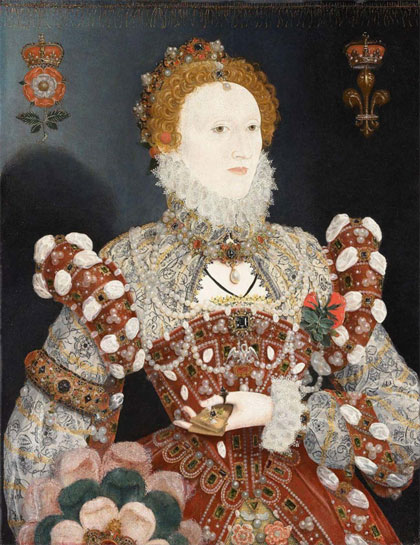 White Ceruse Gave Her A Ghostly Complexion
White Ceruse Gave Her A Ghostly Complexion
Elizabeth’s favorite cosmetic was Venetian ceruse, a mixture of white lead and vinegar. The queen powdered her face and neck with the substance, transforming her skin into a porcelain canvas.
But ceruse contained dangerous poisons that Elizabeth and other wearers absorbed through their skin.
On the surface, the lead slowly corroded the queen’s face. In response, Elizabeth wore thicker and thicker layers of makeup, reportedly layering makeup an inch thick toward the end of her life.
• • Photo: Unknown / Wikimedia Commons / Public Domain
 She Wore Lead Makeup For A Week Straight, Then Used Mercury To Remove It
She Wore Lead Makeup For A Week Straight, Then Used Mercury To Remove It
In the Elizabethan era, nobles didn’t clean off their makeup nightly. Instead, after her ladies carefully applied lead makeup to the queen’s face, Elizabeth wore it for at least a week. During that time, the lead soaked into her skin, causing it to turn gray and wrinkled.
When Elizabeth finally had her makeup removed, they might have taken it off with a concoction containing eggshells, alum, and mercury – another dangerous poison that could slowly kill the queen. While some people in Elizabeth’s time claimed the mercury makeup remover left their skin soft, that was because it literally peeled away their skin.
• • Photo: Unknown/Government Art Collection / Wikimedia Commons / Public Domain
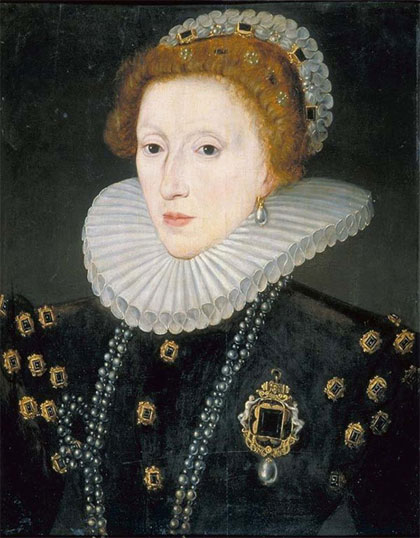 She Survived Smallpox, But It Left Her Permanently Scarred
She Survived Smallpox, But It Left Her Permanently Scarred
Elizabeth came down with smallpox on October 10, 1562, when she was struck with a high fever. Within a week, courtiers worried that Elizabeth, still in her 20s, would die. The young royal survived, but the disease left behind permanent scars.
Smallpox scars were a common problem at the time; Elizabeth’s close friend, Mary Sidney, ended up with them, too. As Henry Sidney, Mary’s husband, wrote, “The scars… (to her resolute discomfort) ever since have done and do remain on her face.”
Royals like Elizabeth did everything possible to cover up such blemishes.
• • Photo: Marcus Gheeraerts the Younger / Wikimedia Commons / Public Domain
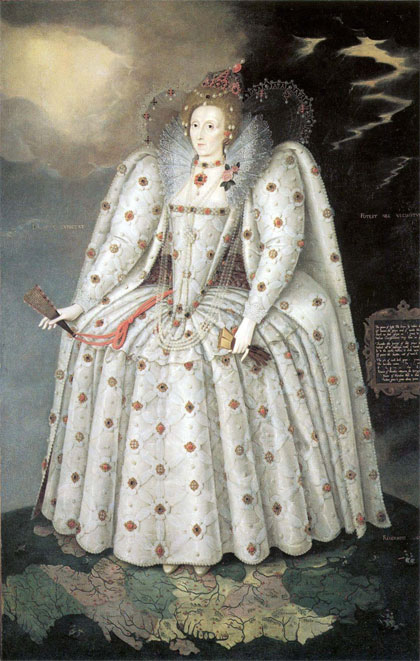 As She Aged, Elizabeth Worried About Spots And Blemishes
As She Aged, Elizabeth Worried About Spots And Blemishes
As one of the only female monarchs in England’s history at the time, Elizabeth knew she was being watched closely. In 1586, now in her early 50s, Elizabeth commented on the weight of these expectations while addressing Parliament:
We princes, I tell you, are set on stages in the sight and view of all the world duly observed; the eyes of many behold our actions, a spot is soon spied in our garments; a blemish noted quickly in our doings.
Although she spoke of both male and female rulers, Elizabeth’s language implied concern over her own appearance. Choosing to frame the concern around spots and blemishes hinted the ruler was worried about appearance, not just actions.
• • Photo: Formerly attributed to William Scrots / Wikimedia Commons / Public Domain
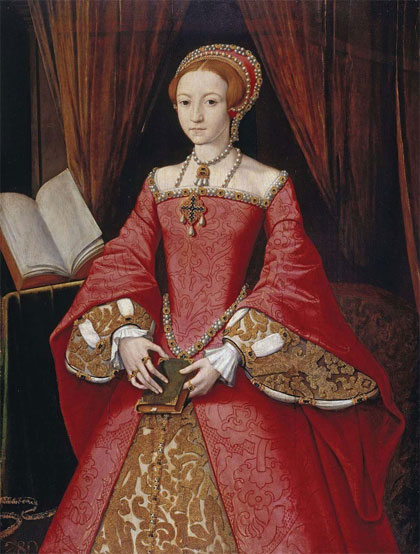 She Likely Wore Much Less Makeup In Her Youth
She Likely Wore Much Less Makeup In Her Youth
In her early years, Elizabeth wore much less makeup. She didn’t have smallpox scars to cover up until her late 20s, and before she damaged her skin with lead makeup, Elizabeth likely wore a much lighter dusting of ceruse.
• • Photo: Unknown/National Portrait Gallery / Wikimedia Commons / Public Domain
 In England, It Was Against The Law To Create Unflattering Portraits Of Elizabeth
In England, It Was Against The Law To Create Unflattering Portraits Of Elizabeth
During Elizabeth’s reign, England passed a law prohibiting unflattering portraits of the queen. Instead, painters had to portray the queen as wrinkle-free, even as she aged into her 60s. Portraits thus idealized Elizabeth’s looks, showing her as she wanted to be seen: strong and healthy, with pale, unblemished skin.
Artists had to paint a recognizable portrait while upholding the perfection of the queen’s appearance. The “Darnely Portrait,” painted in 1575, became a model for later portrayals, as artists reused its depiction of Elizabeth’s face in paintings for decades.
• • Photo: Unknown / Wikimedia Commons / Public Domain
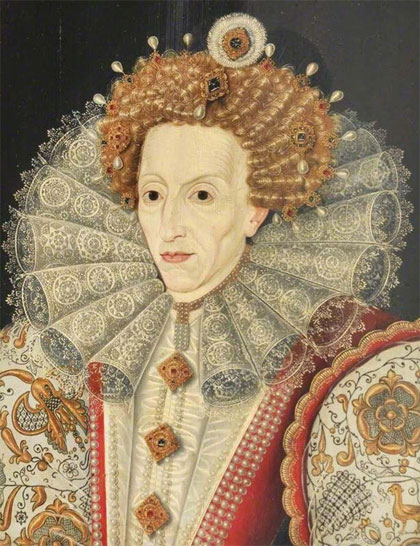 An Earl Was Shocked When He Saw The Queen Without Her Wig And Makeup
An Earl Was Shocked When He Saw The Queen Without Her Wig And Makeup
In the last years of her reign, Elizabeth fought to cover up the signs of aging. But in 1599, the Earl of Essex managed to catch sight of the queen in her nightdress, without her wig and makeup.
The earl was shocked to find his queen mostly bald, with only a ring of thin hair “hanging about her ears.” Without makeup, Elizabeth’s wrinkles showed her years.
• • Photo: Unidentified painter / Wikimedia Commons / Public Domain
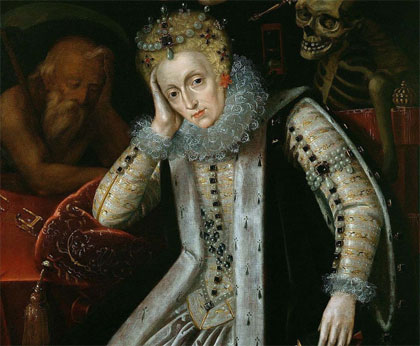 In Her Last Days, She Refused To Let Doctors Near Her
In Her Last Days, She Refused To Let Doctors Near Her
In the last months of her life, Elizabeth refused to let doctors examine her. The queen had fallen into a “deep melancholy,” according to a member of her court. Still, Elizabeth refused to rest. She believed that if she lay down, she would never get up. So Elizabeth stood for 15 hours straight, with her ladies spreading pillows around the queen for when she inevitably collapsed. On March 24, 1603, Elizabeth passed.
Did lead makeup end the queen’s life? It’s very possible that the poisonous makeup slowly led to her demise. Other possibilities include cancer or pneumonia, but Elizabeth’s use of lead-based makeup for decades certainly contributed to her declining health.
• Photo: Formerly attributed to George Gower / Wikimedia Commons / Public Domain
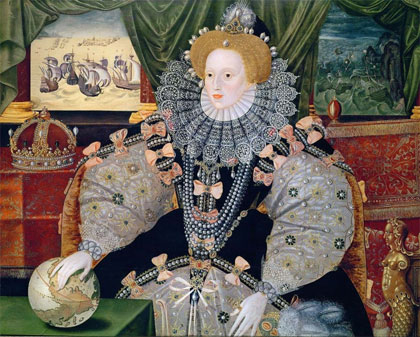 The Queen’s Lady-In-Waiting Claimed Her Body Burst In Her Coffin
The Queen’s Lady-In-Waiting Claimed Her Body Burst In Her Coffin
After decades of lead poisoning, Elizabeth’s body was surely toxic. Elizabeth Southwell, one of the queen’s ladies-in-waiting, even claimed that Elizabeth’s body burst in her coffin after she died, due to the abundance of “noxious vapours.”
However, historians have reason to doubt the reliability of Southwell’s account.
• • Photo: Unknown / Wikimedia Commons / Public Domain
 Her Coronation Ring May Have Caused Blood Poisoning
Her Coronation Ring May Have Caused Blood Poisoning
While Elizabeth almost certainly suffered the effects of lead poisoning, she may have died from blood poisoning. Just a week before she passed in 1603, Elizabeth’s doctors recommended a risky procedure. For 45 years – since the day she was crowned – Elizabeth wore a coronation ring. After decades without ever removing it, the ring was cutting into Elizabeth’s skin. Doctors warned her that the ring had to be removed.
A week later, she was gone. It’s possible that removing the ring caused blood poisoning that contributed to the ruler’s demise.
• • Photo: Mary Queen of Scots / Focus Features
 Today, Makeup Artists Use Safer Products To Re-Create Elizabeth’s Look
Today, Makeup Artists Use Safer Products To Re-Create Elizabeth’s Look
Since the Elizabethan era, the queen’s signature look has captured the popular imagination. When movies retell Elizabeth’s life, makeup artists also have to re-create the look – only with safer products. Jenny Shircore, head of hair and makeup for Mary Queen of Scots, explained, “You couldn’t use what they used back then because it was full of lead and mercury.”
To transform Margot Robbie into the ruler, Shircore even created smallpox scars, which she then covered with makeup.
• • Photo: Kerameikos Archaeological Museum / Wikimedia Commons / Public Domain
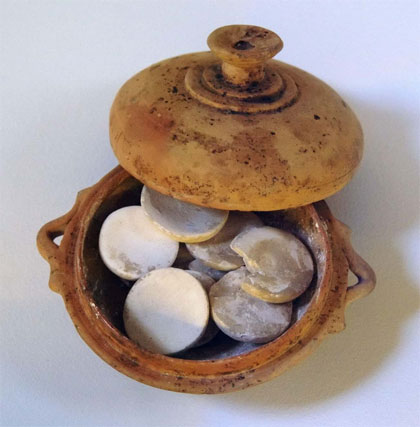 Ceruse Dates Back Thousands Of Years
Ceruse Dates Back Thousands Of Years
Evidence of people using lead for makeup dates back at least to the fifth century BCE. During the time of the Roman Empire, women powdered their faces with lead. By the 16th century, the concoction was known as Venetian ceruse, or “the spirits of Saturn.”
The poisonous combination was popular for centuries even though it caused hair loss and skin damage. It wasn’t until 1634 that ceruse was even classified as a poison – by then, Elizabeth had been gone for more than three decades.
• • Photo: The White Queen / BBC One
 Want More Historical Royals?
Want More Historical Royals?
While some historical rulers seem like characters out of a gallant fairy tale, most of them come off as dangerously extra. To live under these madcap monarchs and curious queens would have been the eponymous “worst of times” – but reading about them from the safety of the 21st century is undeniably entertaining. If you want more content of monarchs behaving badly – and occasionally for the greater good – check out these books, films, and other media.
The Three Emperors. For those interested in both monarchies and world history, this book examines the lives of Kaiser Wilhelm II, George V, and Tsar Nicholas II, and how their reigns shaped and were impacted by World War I.
Horrible Histories: Cruel Kings & Mean Queens. This is an all-ages recommendation, but if you want educational entertainment, you really can’t do better than the Horrible Histories series. It has spawned a mega-franchise of live-action and animated shows, but the books were where it all began, and they offer history through a comedic but factual lens.
Based on the historical novels of Philippa Gregory, The White Queen miniseries depicts the Wars of the Roses through the eyes of the women who operated behind the scenes: Elizabeth Woodville, Margaret Beaufort, and Anne Neville.
For those who enjoy the sexy danger of Game of Thrones, but with a dash more historical truth involved, both The Tudors (centering on King Henry VIII) and Versailles (King Louis XIV) come highly recommended. Each series offers plenty of glossy drama to go along with the true events.
For further reading, Ranker’s editors have selected the following lists that provide even more fun, bizarre, and surprising facts about ancient rulers:
• Real Historians Answer Questions About Historical Kings We Wish We’d Asked Sooner
• The Most Brutal Medieval Monarchs
• Facts About Historical Royals That Sound Made Up But Aren’t
• Facts We Just Learned About Historical Queens That Made Us Say ‘Really?’
ranker.com

























